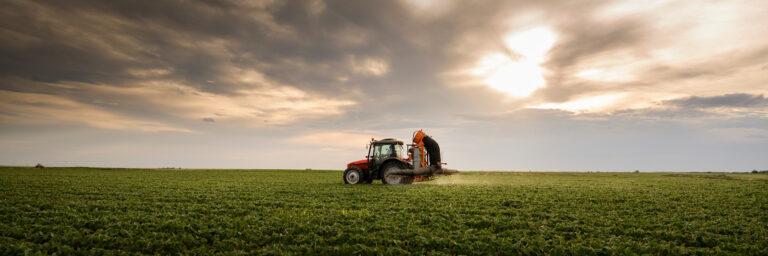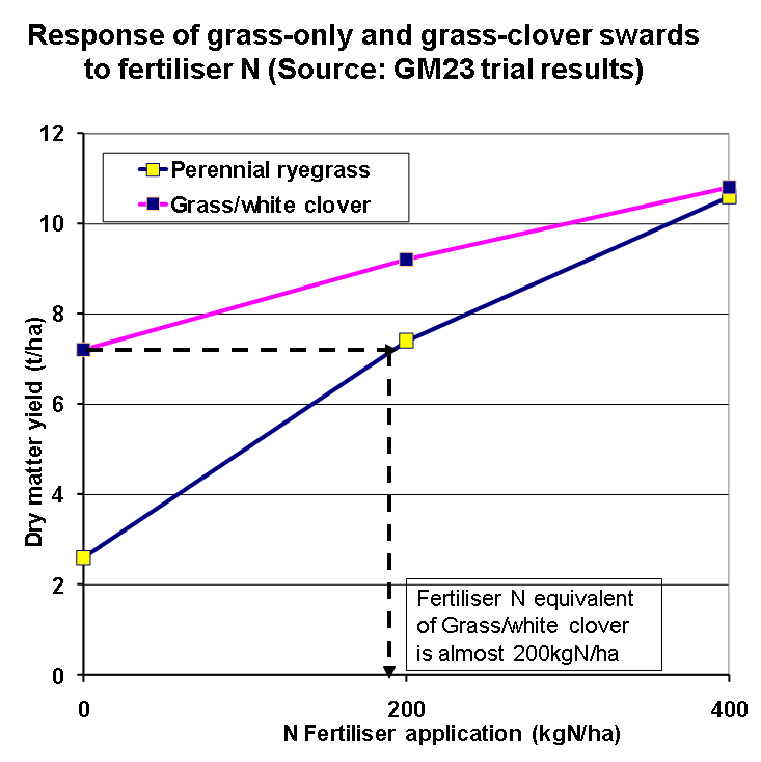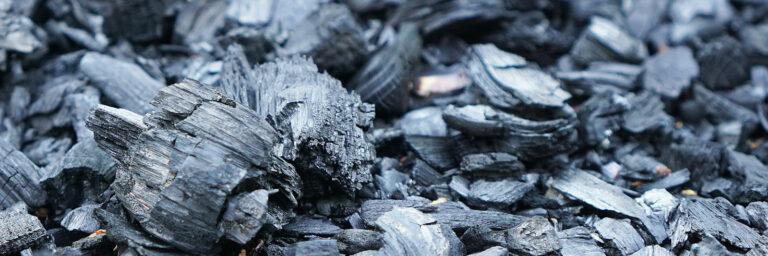
April Business Update: SRUC
After two years of operation as a Limited Company, Agrecalc became part of Scotland’s Rural College (SRUC) as of 1 April 2025.
While clover is not the silver bullet to all our problems in the agricultural sector, it certainly has the potential to play a central role in making the farm system more efficient, productive, sustainable, and profitable. This is particularly true for grass-based livestock systems.
The time of year that provides the highest opportunity to incorporate clover into grassland system has come again. We are hearing more and more about clover as the answer to many of farmers’ problems, including sky high fertiliser prices and the urgent need to reduce our reliance on carbon-intensive synthetic fertilisers.
While clover is not the silver bullet to all our problems in the agricultural sector, it certainly has the potential to play a central role in making the farm system more efficient, productive, sustainable, and profitable. This is particularly true for grass-based livestock systems.
However, it seems that there is still quite a bit of scepticism and uncertainty about the practicalities of implementing clover into the system at farm level and the ability to keep it in the sward. We’ll examine the existing information on the use of white clover and summarise this knowledge into one cohesive document that encompasses what you need to know when incorporating clover into your grass-based system.
Incorporating clover into the system requires careful planning, management, and the consideration of a wide range of factors.
The most notable benefits of white clover in a grassland system are: nitrogen fixation, combating soil compaction, balancing overall growth pattern of the sward, and strong nutritional value for ruminant livestock.
The most well-known benefit of clover is its ability to naturally fix significant amounts of Nitrogen (N) in the soil. For reference, in a 30% clover sward, you could expect the clover to contribute in the region of 180kg of N per hectare per year.
White clover has a deeper rooting system than perennial ryegrass, which helps to combat soil compaction and density that affects many farms. Soil compaction and the effect it has on performance are issues most farm businesses are completely unaware of. Compaction reduced by white clover’s deeper rooting system enhances nutrient and water movement within the soil.
Clover has a higher required soil temperature of 8 degrees Celsius for growth: its growth pattern over the year is different to grass (which grows from around 4 degrees). In this way clover helps to balance the overall growth pattern of the sward over the course of the year, boosting growth in the mid- to late-growth season as grass growth starts to drop off significantly.
A sward with a grass clover mix has a strong nutritional value for livestock, relative to grass-only swards. For every 10% increase in the clover content of the sward, there is a 1% increase in crude protein. Ruminant livestock can also consume 20-30% more clover than grass, assuming equal access, due to higher palatability.

While establishing clover through a full reseed is generally the best option for successful establishment, over-sowing of existing swards is also a potential option. For older unproductive swards, the best option is to go with a full re-seed. However, if you still have a younger productive sward, over-sowing may be a good option.
The soil fertility status of the field is also a crucial consideration. Ideally here pH should be between 6-6.5 and at least index 3 (M- or above in Scotland). Weed control is another important consideration, and there are a range of things that we can do to maintain a weed free grass / clover sward. Good soil fertility will allow the clover to compete with weeds at establishment.
For a full reseed, glyphosate can be used to kill off old the old sward and any weeds. The new grass sward can then be sown, monitored for any weed problems, and treated before clover is introduced. Finally, stitch-in or broadcast the clover into the established sward 6 weeks after weed control. In the case of incorporating clover into existing swards you need only take the last step in this process.
Once the clover is established, weeds in the sward can be well managed by good grazing management and topping if needs be. When looking at over-sowing, correct field preparation is key for good establishment, cleanly grazing off the field as close to 4cm as possible or taking a cut of silage to open up the base of the sward and allow for as much soil-seed contact as possible.
The time of sowing is another key consideration. Ideally clover should be sown from April to June while growing temperatures are high (clover requires a higher soil temperature of 8 degrees C for growth), and moisture content in the soil is still high. Sowing early in the season like this give plenty of time for the clover to establish over the year before temperatures drop and ensures the soil has not dried out too much. Finally, it is quite important to have the correct paddock grazing infrastructure set up where each paddock is grazed over 3 days or less on an 18–21-day rotation.
Ideally clover should be sown from April to June while growing temperatures are high (clover requires a higher soil temperature of 8 degrees C for growth), and moisture content in the soil is still high. Sowing early in the season like this give plenty of time for the clover to establish over the year before temperatures drop and ensures the soil has not dried out too much.
In terms of the actual sowing process there are also a number of important considerations to bear in mind. Some mechanical intervention may be required in sheep systems with denser swards to open them up, ensuring good soil-seed contact, for example the use of a tine harrow in advance. In cattle systems with more open swards the seed can likely be directly broadcast more easily.
In terms of seeding rate aim for 2.5-5kg/Ha. It’s advisable to select a variety that is suitable for your system and chosen from recommended lists, for example small-medium variety of clover are more suited to intensive cattle and sheep grazing respectively whereas larger leaf varieties are more suited to silage.
White clover is also more suited to intensive grazing systems than red, whereas red clover can be well suited to high protein silage production or in mixed swards. When sowing clover, mix 2.5-5kg of clover seed with a 50kg bag of a product such as 0-7-30 or 0-10-20 depending on requirements. However, it is important to mix these in the field and to do a small amount at a time as the seed and fertiliser will separate in the spreader with even a small amount of driving.
Phosphorus (P) is required at sowing for establishment, whereas N should not be applied to give clover a chance to establish and not be overcrowded with grass. Avoid windy days if broadcasting as this may affect distribution of the lighter clover seed. If stitching in, follow same guidelines as outlined for broadcasting, but take care not to bury the seed too deep, aim for 10-12mm and ideally roll afterward.
Grazing and grassland management after the establishment of the clover in the sward is essential to ensure its persistence and longevity. It would be advised to get around and graze covers at no more than 1000-1200kgDM/Ha. If the grass is allowed to get too far ahead of the clover, it begins to crowd out the clover and negatively impact persistence.
White clover also needs light to survive the winter, which means swards must be kept well grazed in late autumn and spring to improve clover survival and productivity during the following growing season.
Reducing the amount of N being applied to the sward once clover is established is crucial for clover persistence. Clover will naturally fix N from the atmosphere, however if we continue applying N, this removes the clover’s function and increases competition from grass in the sward and leads to the clover disappearing.
The optimum clover content in the sward is about 30% which can fix about 180kgN/Ha per year. However, as a rule of thumb, a 30% clover content in the sward appears more like twice that much – meaning clover content is often overestimated. In a sward which has a true white clover content of around 30% N fertiliser can be pedalled back to almost nothing from May onward. Small amounts of N used (less than 50kg/ha) preferably earlier in the growth season can increase grass growth without having to much effect on clover N fixation.
Silage containing larger amounts of clover should be wilted for 1-2 days. If well managed white clover swards with 30% clover content can last as long as 7-10 years. One thing to remain vigilant about with the increased use of clover in livestock systems is bloat. The risk of bloat can be mitigated by various grazing management practices such as:
If white clover is diseased, it should not be fed to ewes for a few weeks before and after tupping as it can cause infertility. Finally, it is important to recognise that it typically takes about a year for the clover to reach the above quoted levels of N fixation.
While clover has huge potential to drive increased sustainability and profitability on the farm, it requires skilled grassland management and attention to detail for successful implementation. There will also of course, as is usually the case in agriculture, be a certain level of trial and error involved which is to be expected. Stick with the process and aim to learn from any mistakes and you’ll have plenty of clover in your paddocks in no time!
Sources & Links for Further Reading:
https://www.teagasc.ie/crops/grassland/grass10/clover/
https://www.youtube.com/watch?v=t4_fcr0jNNg
https://ahdb.org.uk/knowledge-library/dealing-with-weeds-clover-establishment
https://www.sruc.ac.uk/media/jdodyn0k/tn741-grass-clover-recommendations-2021.pdf
https://www.teagasc.ie/media/website/animals/beef/White-Clover-Tech-Note.pdf

After two years of operation as a Limited Company, Agrecalc became part of Scotland’s Rural College (SRUC) as of 1 April 2025.

Biochar is a carbon-rich material produced by pyrolysing biomass, which offers a variety of potential agronomic benefits. In this guest article, Black Bull Biochar discusses how these effects work together to bolster productivity, sustainability, and resilience in farming.

The Agrecalc team is looking forward to welcoming you at our stand (2.844) at this year’s Low Carbon Agriculture Show, taking place on March 5 and 6, at NAEC Stoneleigh near Kenilworth.